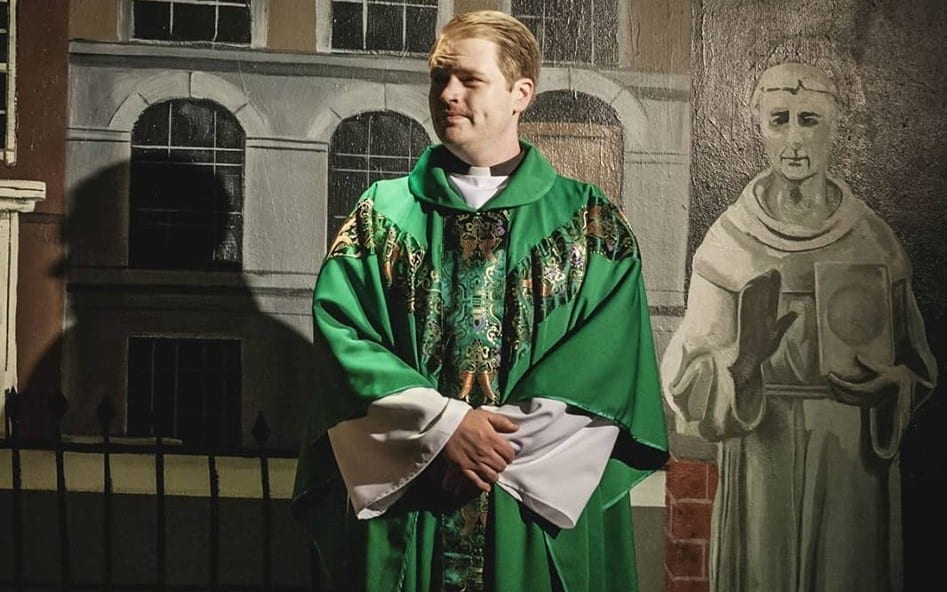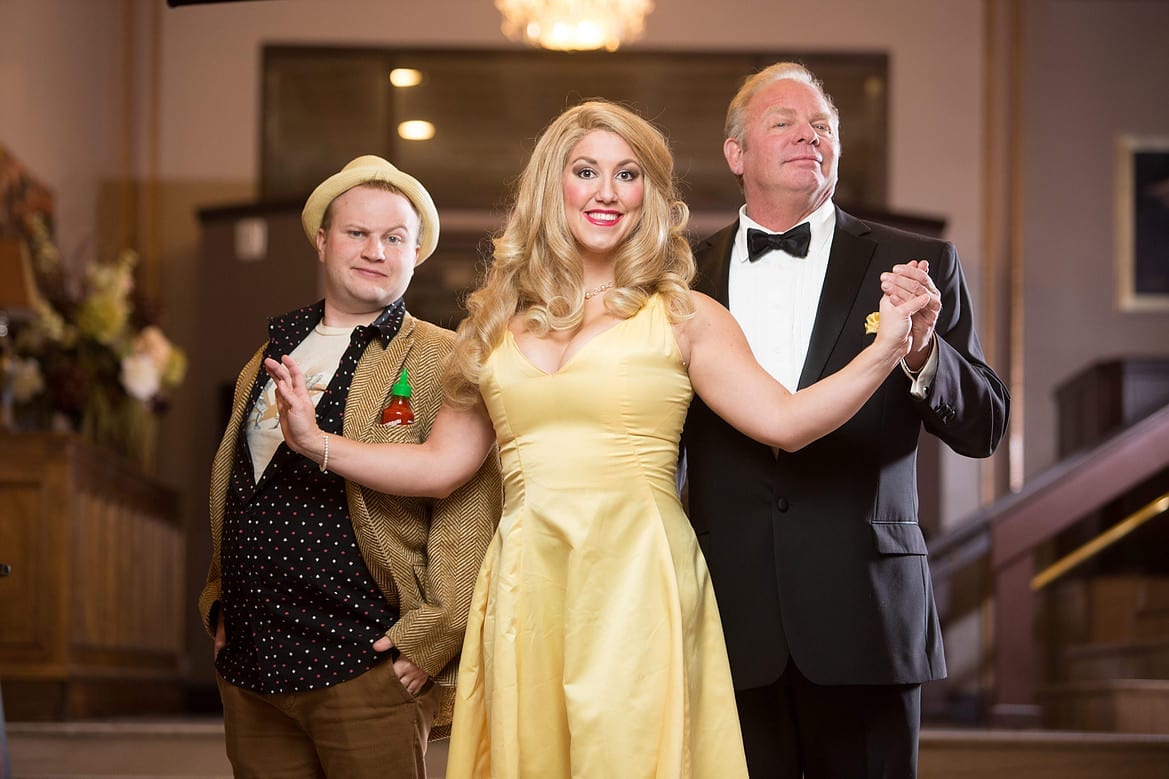PROVO — With Taylor Jack Nelson as director, An Other Theater Company’s performance of the award-winning play, Doubt: A Parable, was excellent and thought-provoking. Originally written by John Patrick Shanley, this Broadway show was transformed for the retail space-turned-theater at the Provo Towne Center Mall in a marvelous and creative way. The superb artistry, fantastic directing, and incredible acting talents of just four performers worked together to produce what was the best show I have seen performed by An Other Theater Company.

Show closes November 23, 2019.
The set, designed by Kacey Spadafora, was stunning. Spadafora included simple pieces of furniture, including a desk, a bench, and a few chairs that were able to depict three separate locations without set changes being needed. Some of my favorite pieces were the several branches that hung from the ceiling, posed as though they came out of a tree at center stage.
The backdrop for the set was a mural created by Lyndee Bauman—and it was beautiful. No detail was left unnoticed, from the leaves on the ground under the three-dimensional tree to the shading of windows and fence spikes. The Christian statues on either side were the most impressive elements of this mural, seeming so lifelike thanks to Bauman’s magnificent artistic abilities. This mural was the perfect background for the entire production.
Hair, makeup, and costume designs by Mel Howarth were also exceptional. From the nun’s habit to the black and white collars and other vestments belonging to Catholicism’s clergy, they helped the story to feel real. I also enjoyed Howarth’s wardrobe choice for the character Mrs. Muller, being simple, professional, and seeming to sparkle—a contrast to the realities this character was facing in her own life.
Aaron Gubler matched the set, props, and costumes with first-rate lighting design. When characters were in an outdoor scene, the lighting seemed to change over time as though they were really outdoors experiencing the same time of day the script described. I also loved the shadowing that came from the tree branches when either of the Sisters sat on the bench outside, as well as the silhouette of an unseen window that shone in on Sister Aloysius’ office. Well done, Gubler!
Father Flynn (played by Spadafora) was the first to appear on stage, giving a sermon to his congregation (or, more appropriately, to the audience who sat in the theater’s classic yellow pews). On several occasions, Spadafora delivered brilliant monologues, not tripping over any words. Spadafora was able to convincingly portray a secret-withholding Catholic priest, especially when he allowed his emotions to show through in Sister Aloysius’ office.
Sister Aloysius, played by Kim Abunuwara, was, arguably, the star of this show. Abunuwara played the traditional, old-fashioned principal of the Catholic school. The character seemed always to be certain about things, stirred up trouble, and cared about justice and the welfare of her students. Even when Abunuwara may have stumbled on her lines, she naturally picked back up and, in effect, made the words of the play her own. She never sounded as though she was reading from a script, but instead, Abunuwara became Sister Aloysius and convinced me that this character was her own, true identity.
The final two performers, Shelby Noelle Gist and Alexis Boss who played Mrs. Mueller and Sister James respectively, also showcased their acting talents. Gist was only a part of one scene but expressed true emotions about the love her character had for her son as well as the tough realities Mrs. Mueller faced in such a convincing way that I wished Gist was able to be onstage more often. Boss portrayed the character of Sister James, who I saw go from an innocent and unquestioning eighth grade teacher to a nun in a sort of faith crisis all in under two hours. Both actresses proved their skills and convincingly played their roles.
Don’t miss the phenomenal storytelling done at An Other Theater Company of Doubt: A Parable. The unbelievable talent did justice to this dramatic tale that explored the unending complexities of life and that discussed — through clever theatrical arts — the conflict between certainty and doubt.





